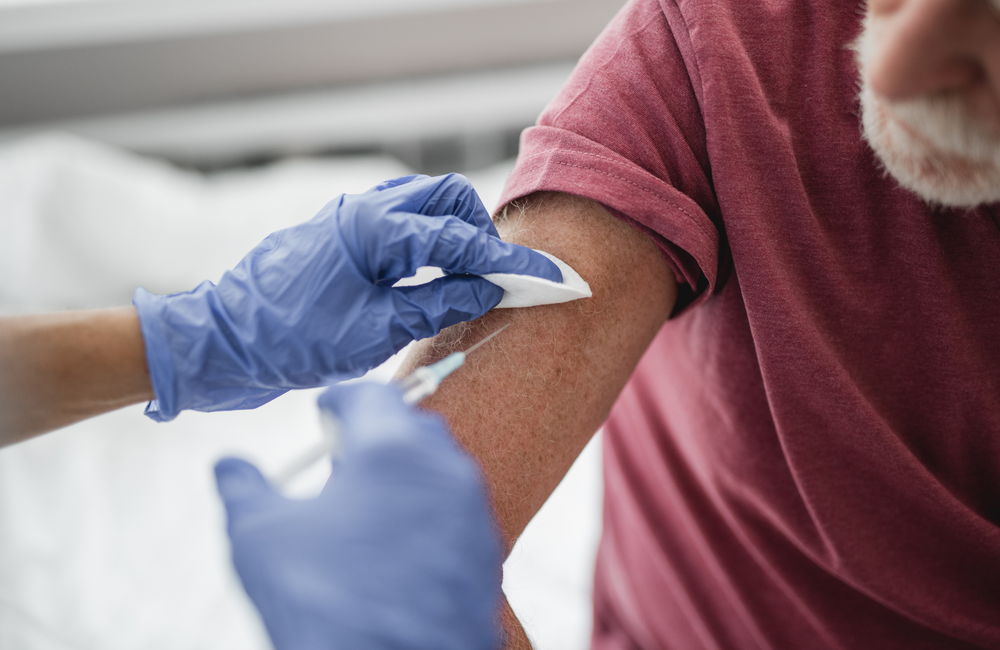
The Chinese CoronaVac vaccine against SARS-CoV-2 produces strong antibody responses in the majority of people with HIV but these responses are weaker than those in people without HIV, Brazilian researchers report in the journal Lancet HIV. People with CD4 counts below 500 were less likely to show neutralising responses to the virus than people with higher CD4 counts.
CoronaVac was developed by the Chinese company Sinovac Biotech. It is one of the most widely used SARS-CoV-2 vaccines in the world. It has been approved for emergency use in 54 countries and outside China, it has been used as the major element of national vaccination campaigns in Brazil, Indonesia, Turkey and Chile. In Europe the vaccine has been used in Albania, Bosnia, Moldova, North Macedonia and Ukraine.
CoronaVac uses a different vaccine technology from the mRNA vaccines developed by Pfizer and Moderna or the adenovirus-vectored vaccines developed by Oxford University and Janssen. CoronaVac is an inactivated vaccine, a type of vaccine technology that has been used widely since the 1950s in polio and flu vaccines. Inactivated vaccines use killed whole virus rather than spike proteins to stimulate an immune response. Inactivated vaccines do not need to be stored in a freezer, a major advantage for resource-limited health systems.
General population data from Chile and Indonesia show that Coronavac has been highly effective in preventing hospitalisation and death. Information about its use in people with HIV has been lacking. But Dr Lucas Netto and colleagues have now reported on the safety and immunogenicity of CoronaVac in a large cohort of people with HIV receiving care at the University of Sao Paolo, Brazil.
Brazil has more than one million people living with HIV and as CoronaVac has been used extensively as part of the national vaccination programme, this is a pressing question.
The study compared vaccine responses in 215 people with HIV and 296 people with no known immunosuppression who received two vaccine doses at least 28 days apart. People with HIV were recruited consecutively at the university’s HIV outpatient clinic and matched by age and sex with an HIV-negative control group.
People with HIV were significantly older than the control group (54 vs 48 years, p< 0.0001) and less likely to be female (40% vs 63%, p<0.0001). They were also significantly more likely to have at least one co-morbidity, but this difference was chiefly explained by a higher prevalence of elevated lipids in people with HIV rather than a higher frequency of conditions known to increase the risk of severe COVID-19 outcomes.
The median CD4 count in people with HIV was 655 and 89% had a fully suppressed viral load (< 50 copies/ml).
Antibody detectability and neutralising antibody levels were measured two months (69 days) after the second dose. At this point there was a small but statistically significant difference in the proportion of people with HIV and HIV-negative people who had developed antibodies as a result of vaccination (91% vs 97%, p=0.0055). The proportion of people with HIV who had detectable neutralising antibodies was also significantly lower (71% vs 84%, p=0.0008). People with HIV had significantly lower IgG antibody levels and neutralising antibody activity (both p<0.0001).
Neutralising antibody positivity (76% vs 59%) and activity (49% vs 41%) were each more frequent in people with HIV with CD4 counts above 500 than below.
Multivariable analysis that adjusted for age and sex showed that people with a CD4 count above 500 were more likely to be positive for IgG antibodies (adjusted risk ratio 1.15, p=0.026) and neutralising antibodies (aRR 1.29, p=0.027), whereas age did not affect the likelihood of antibody responses.
There was no significant difference between people with HIV and HIV-negative people in adverse reactions after either dose of vaccine. All adverse events were mild. The most frequently reported adverse events were headache, tiredness and injection site pain.
"CoronaVac has been the major element of national vaccination campaigns in China, Brazil, Indonesia, Turkey and Chile."
The study investigators say that, as for other vaccines, people with HIV who receive CoronaVac should receive a booster dose. Brazil implemented a policy of offering booster doses to fully vaccinated people with HIV in September 2021. The investigators say more research is needed to define the best time to give booster doses and which sub-groups of people with HIV will benefit from boosting.
Two other studies have also provided further information on Coronavac in people with HIV. A Chinese study in 120 people with HIV and 53 HIV-negative people who received either Coronavac or another inactivated vaccine, showed that people with HIV had lower antibody levels, lower neutralising antibody activity and lower T-cell responses than people without HIV.
A Chilean study in 193 people with immunocompromising conditions, including 55 people with HIV with CD4 counts below 500, also found significantly lower neutralising antibody positivity and activity in people with HIV compared to HIV-negative controls, measured 8-12 weeks after the second vaccine dose.
Netto LC et al. Safety and immunogenicity of CoronaVac in people living with HIV: a prospective cohort study. Lancet HIV, published online 2 March 2022.
DOI: 10.1016/S2352-3018(22)00033-9
Huang X et al. Comparing immune responses to inactivated vaccines against SARS-CoV-2 between people living with HIV and HIV-negative Individuals: a cross-sectional study in China. Viruses, 14(2):277, 2022.
DOI: 10.3390/v14020277
Balcells ME et al. Reduced immune response to inactivated SARS-CoV-2 vaccine in a cohort of immunocompromised patients in Chile. Clinical Infectious Diseases, published online 7 March 2022.
DOI: 10.1093/cid/ciac167
